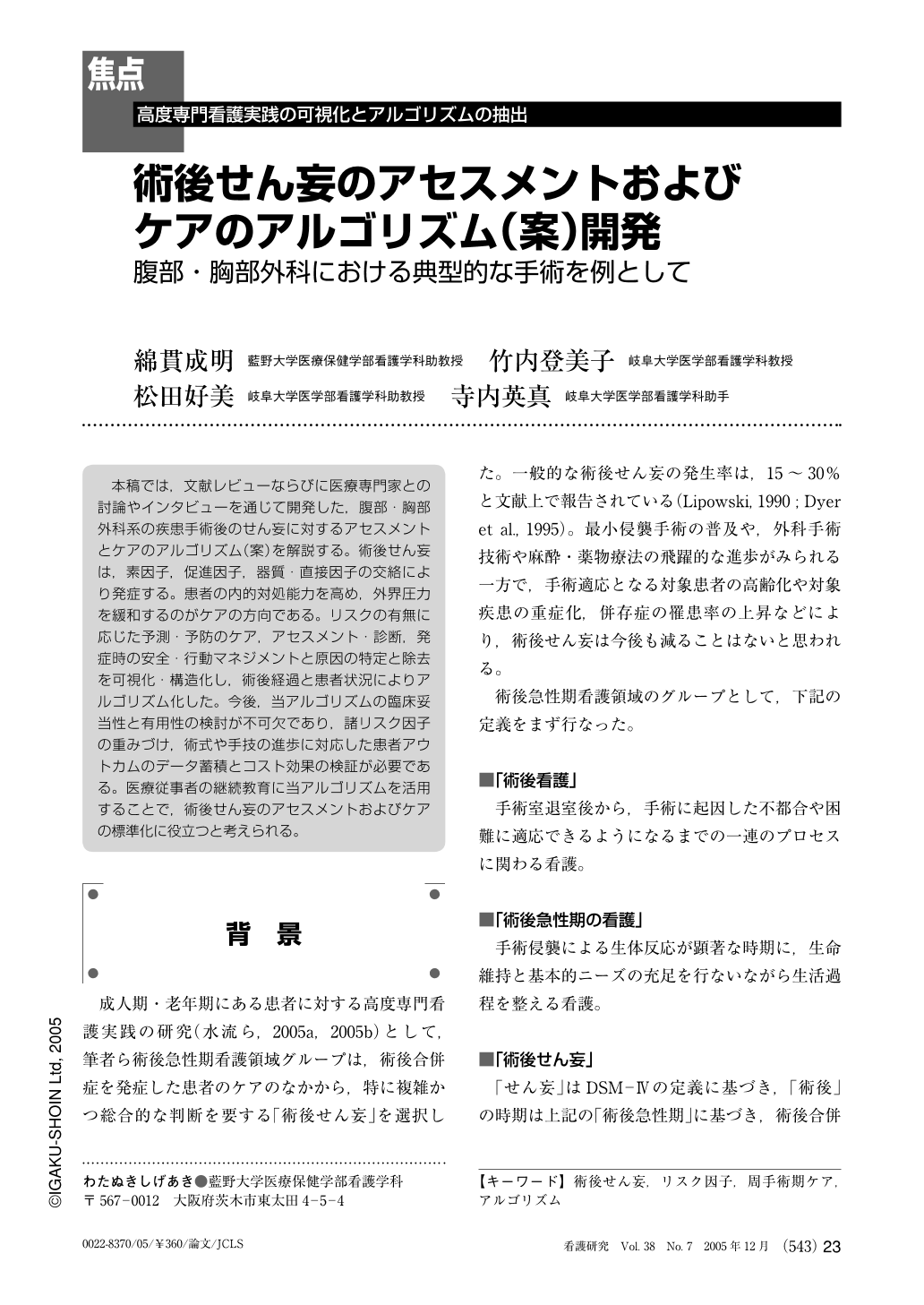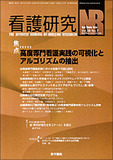Japanese
English
- 有料閲覧
- Abstract 文献概要
- 1ページ目 Look Inside
- サイト内被引用 Cited by
本稿では,文献レビューならびに医療専門家との討論やインタビューを通じて開発した,腹部・胸部外科系の疾患手術後のせん妄に対するアセスメントとケアのアルゴリズム(案)を解説する。術後せん妄は,素因子,促進因子,器質・直接因子の交絡により発症する。患者の内的対処能力を高め,外界圧力を緩和するのがケアの方向である。リスクの有無に応じた予測・予防のケア,アセスメント・診断,発症時の安全・行動マネジメントと原因の特定と除去を可視化・構造化し,術後経過と患者状況によりアルゴリズム化した。今後,当アルゴリズムの臨床妥当性と有用性の検討が不可欠であり,諸リスク因子の重みづけ,術式や手技の進歩に対応した患者アウトカムのデータ蓄積とコスト効果の検証が必要である。医療従事者の継続教育に当アルゴリズムを活用することで,術後せん妄のアセスメントおよびケアの標準化に役立つと考えられる。
This article describes about the authors-developed as sessment and intervention algorithm for delirium following abdominal and thoracic surgeries that was derived from review of the literature, interview and discussion with expert healthcare professionals. Risk factors of delirium include predisposing factors, facilitating factors, precipitating or organic factors, and interaction of these factors. Care of the patients who are at high-risk for developing delirium or who are experiencing delirium need to be aimed at increasing patient's internal (physiological, cognitive, and psycho-emotional) competence and alleviating external (environmental) pressure. The structure of assessment and intervention algorithm included (1) prediction and prevention measures that are appropriate to the level of risk for developing delirium, (2) assessment and diagnosis, and (3) safety and behavioral management of patients experiencing delirium, and (4) identification and treatment of etiologic factors of delirium. Future validation study needs to aim at accumulation of clinical outcome data, identification of relative weight of various risk factors, and testing of clinical utility of the algorithm. The algorithm could be used for the continuing education of healthcare professionals and standardization of assessment and care for patients at high-risk for or experiencing delirium.

Copyright © 2005, Igaku-Shoin Ltd. All rights reserved.


